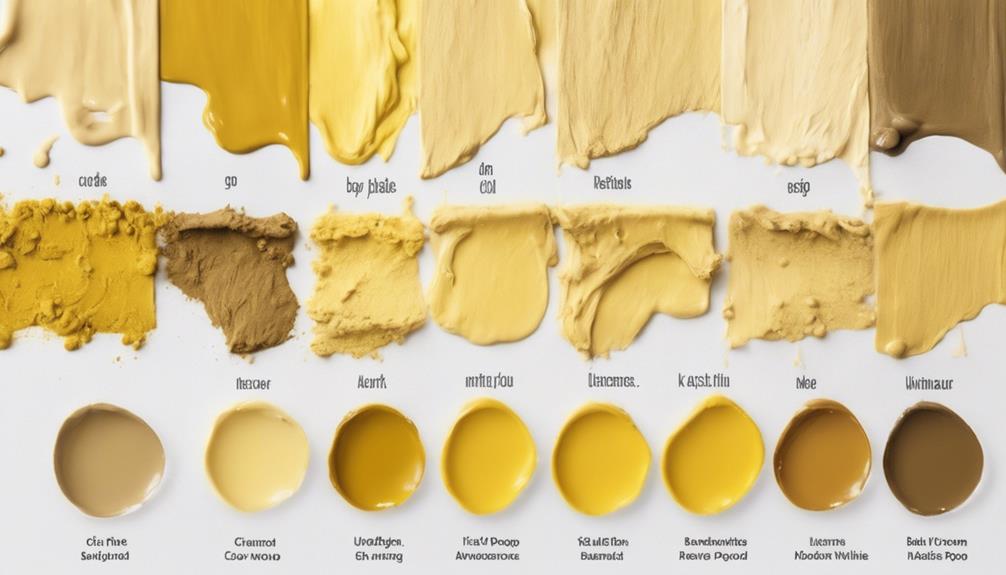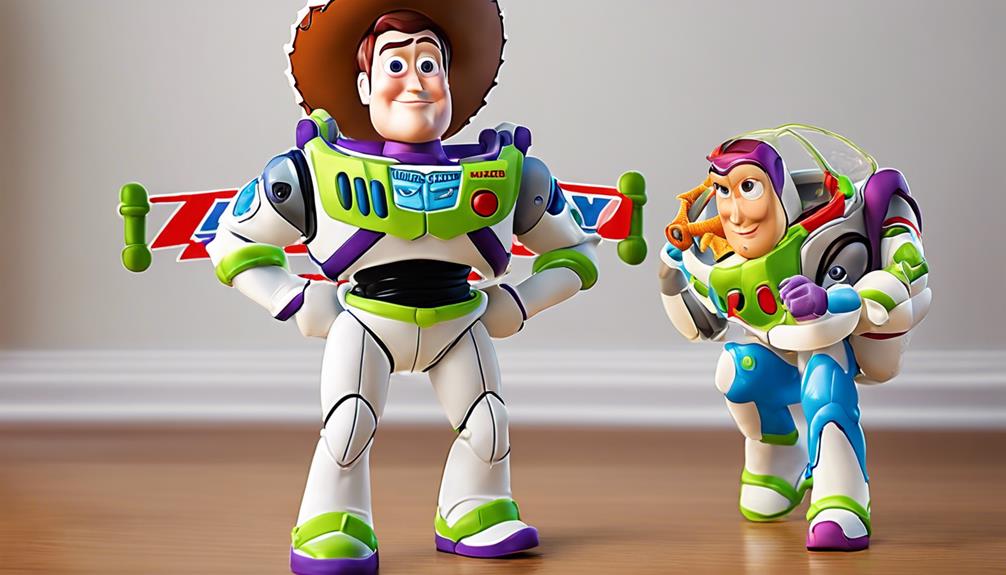As parents, we’ve all navigated the highs and lows of caring for a newborn, from enduring nights without sleep to figuring out what our baby’s cries mean.
But what about the uncharted territory of diaper contents? Imagine a color-coded guide that decodes your baby's poop hues, guiding you through the spectrum of digestive health clues.
Curious about that unexpected shade or texture in the diaper? Stay tuned to unravel the secrets behind each color swatch and why it matters for your little one's well-being.
Key Takeaways
- Meconium, yellow, green, brown, and red baby poop colors signify different stages and health indicators.
- Monitoring poop color and texture helps track newborn digestive health and development.
- Red baby poop may indicate blood or harmless causes, requiring pediatrician consultation for proper evaluation.
- Understanding the transition from meconium to yellow, green, and brown poop aids in newborn care and health monitoring.
Black Baby Poop
Black baby poop, also known as meconium, is typically the first sticky and tar-like stool passed by newborns. It consists of mucus, amniotic fluid, skin cells, and remnants of lanugo hairs. This dark stool has no strong odor and is a sign that the baby has started digesting the amniotic fluid they ingested before birth.
In the first few days of life, the meconium will shift to yellowy-green stools as the baby's digestive system matures. It's essential for parents to note that black baby poop shouldn't persist beyond the initial days. If there are any concerns about the color or consistency of the stool, it's vital to seek advice from a healthcare provider promptly.
Understanding the significance of meconium and monitoring the baby's bowel movements can provide valuable insights into their health and development during these early stages of life.
Yellow Baby Poop

After the initial passage of meconium, newborns commonly shift to yellow baby poop, a color indicative of healthy digestion in breastfed infants. This transition stool color, often resembling mustard, is a reassuring sign for parents. The yellow hue comes from the presence of bile and undigested milk components in the baby's stool. Additionally, the watery consistency of yellow baby poop is a normal feature, reflecting the immature digestive system of newborns. Monitoring the color and texture of your baby's poop is essential for tracking their digestive health and overall well-being. Below is a table summarizing key points about yellow baby poop in breastfed newborns:
| Aspect | Description |
|---|---|
| Color | Mustard yellow, influenced by bile and undigested milk components |
| Consistency | Watery texture, typical of newborn digestive systems |
| Indication of Digestive Health | Healthy digestion in breastfed babies |
Understanding these characteristics of yellow baby poop can help parents feel more confident in caring for their newborns.
Green Baby Poop
Green baby poop is a common occurrence that can be influenced by various factors such as diet and breastfeeding habits. When dealing with green baby poop, here are some essential points to bear in mind:
- Iron-Rich Foods or Formula: Consuming iron-rich foods or formula with added iron can lead to green baby poop.
- Foremilk-Hindmilk Imbalance: An imbalance in breastfeeding, where the baby gets more foremilk (higher in lactose) than hindmilk (higher in fat), can also cause green poop.
- Harmless Yet Worth Monitoring: Green poop in babies is usually harmless and often related to diet changes. However, persistent green color may require consultation with a healthcare provider.
- Potential Underlying Issues: In some cases, green baby poop could be a sign of a milk protein allergy or sensitivity to certain foods in the mother's diet while breastfeeding. Monitoring green baby poop alongside other symptoms is important for maintaining the baby's digestive health.
Brown Baby Poop

Upon introducing solid foods into a baby's diet, the appearance of brown baby poop is a common occurrence that signifies the digestive system adapting to new food sources. As caregivers, understanding that this shift to brown poop is a natural part of a baby's growth and development is significant.
The color and texture of brown baby poop can vary, ranging from soft to firm, which is generally a vital sign that the digestive system is functioning well. However, monitoring the consistency of brown baby poop is important as it can also indicate signs of constipation or irregular bowel movements.
Red Baby Poop
If you notice your baby's poop is red, it may raise concerns about potential underlying issues that require attention and evaluation by a healthcare provider. Here are some important points to take into account regarding red baby poop:
- Red baby poop may indicate blood, but harmless causes like red foods or swallowed blood can also lead to this color.
- Consult a pediatrician if red poop persists or is accompanied by other concerning symptoms.
- Bright red blood in a baby's stool may result from tears in the anus or a cow's milk allergy.
- Red dye in food can also affect the color of baby's poop, resembling blood.
It's essential to seek professional guidance to determine the cause of the red color in your baby's stool. A pediatrician can provide the necessary diagnosis and treatment to address any underlying issues and safeguard your baby's health and well-being.
Frequently Asked Questions
What Does Milk Allergy Poop Look Like?
Milk allergy poop can be green, frothy, and foul-smelling due to milk protein digestion issues. Blood or mucus in stools may signal this allergy. Consult a healthcare provider for diagnosis. Removing dairy from diet helps manage symptoms.
Why Is My Babies Poop Dark Green Almost Black?
I comprehend your concern about dark green or black baby poop. In early days, it's normal due to meconium. As bile and waste move through, colors change. If it persists beyond initial days, consult a healthcare provider for guidance.
What Color Is a Newborn's Poop When on Formula?
When on formula, a newborn's poop color can vary from yellow-brown to green-tan due to different formula compositions. It's normal for formula-fed baby poop to resemble peanut butter in consistency. Changes in formula brands can also affect poop appearance.
Why Is My 2 Week Old's Poop Green?
I acknowledge your concern about your 2-week-old's green poop. It's often normal due to diet adjustments. Green color may result from bile and bacteria. If worrisome symptoms persist, consulting a healthcare provider is advisable for further evaluation.
Conclusion
In the colorful world of newborn baby poop, it's vital to keep an eye on the changes and seek help if needed. Remember, knowledge is power when it comes to your little one's health.
So, don't be in the dark about what's going on in the diaper – stay informed, stay vigilant, and trust your instincts.
After all, when it comes to parenting, it's better to be safe than sorry!










